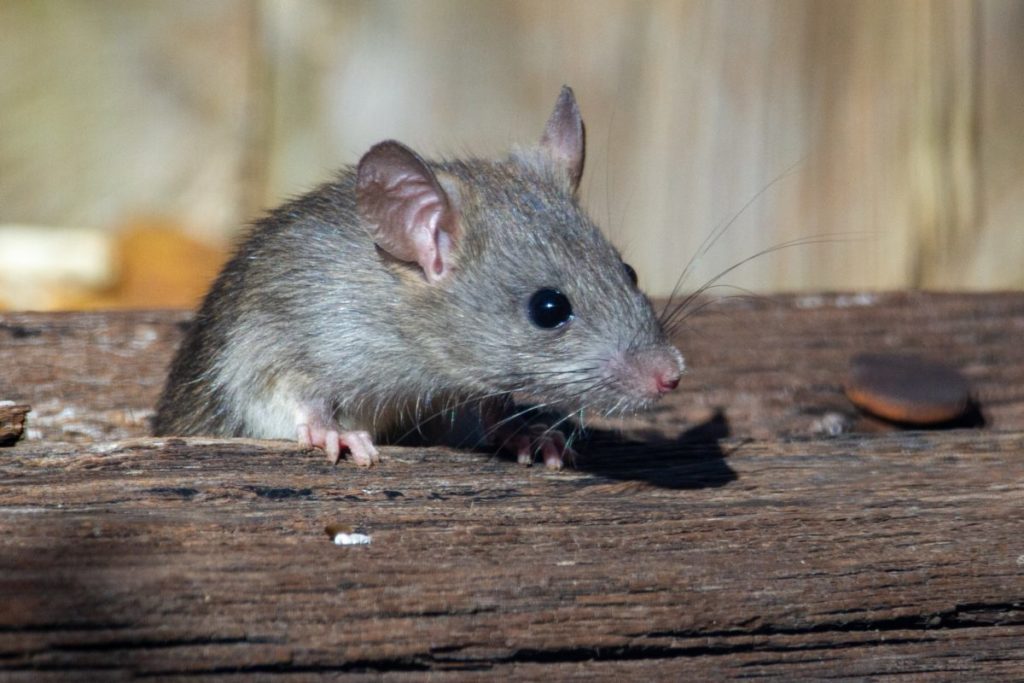Living off-grid is all about embracing self-sufficiency and relying on natural resources.
Unfortunately, this way of life often attracts unwanted pests like rats who can damage your home, contaminate your food supply, and carry diseases that affect both humans and animals in your household pets as well as yourself; however there is hope: these simple tricks will show you exactly how to keep them out!
Seal all entry points
Rats can squeeze through tiny openings, so it’s essential to seal all cracks and crevices around your home and yard. Use steel wool, caulk, or expanding foam to block their entry points.
Use steel wool, caulk, or expanding foam to block their potential entry points.
For example, you can use steel wool to stuff any holes or gaps around pipes, vents, or doors.
This will prevent rats from squeezing through these openings.
Caulk is also a valuable tool in sealing cracks and crevices, especially around windows and doors.
You can use an expanding foam to fill larger gaps and seal off areas like attics or crawl spaces.
These materials are inexpensive and easy to find at most hardware stores.
By taking these steps, you can effectively prevent rats from entering your home and yard, keeping your property safe and rat-free.
Remove standing water
Rats need water to survive, so eliminate any sources of standing water in your yard. Fix any leaky faucets, clogged drains, and leaky irrigation systems.
To effectively eliminate rat infestations from your yard, it is essential to remove any sources of standing water.
Rats need access to water to survive, so eliminating standing water sources can greatly reduce the likelihood of rats inhabiting your yard.
Check your property for any areas with standing water, such as leaky faucets, clogged drains, and leaky irrigation systems.
These sources of standing water provide the perfect environment for rats to thrive.
To fix these issues, you can replace worn-out washers, repair damaged pipes, or upgrade to more efficient irrigation systems.
By addressing these issues, you can eliminate standing water and create a less hospitable environment for rats.
You can regularly inspect your yard for any signs of water accumulation, such as puddles or damp areas, and take prompt action to address them.
By taking these steps, you can help prevent rats from making your yard their home.
Install rat-proof fencing
Consider installing a rat-proof fencing around your yard to prevent rats from entering. Use hardware cloth, which is a mesh material with small openings that rats cannot squeeze through.
Installing rat-proof fencing is a simple and effective way to keep rats out of your yard.
Hardware cloth, a mesh material with small openings, is the most effective choice for rat-proof fencing.
Unlike other types of fencing, hardware cloth is designed specifically to keep rats out, as they cannot squeeze through the small openings.
This means that you can rest assured that your yard will be completely rat-free.
To install rat-proof fencing, begin by digging a trench around the perimeter of your yard.
This will provide a solid base for the fencing and prevent rats from burrowing underneath.
Next, place the hardware cloth along the trench, overlapping the material as you go to ensure that there are no gaps.
Secure the hardware cloth to the trench using wire or posts.
In addition to being effective, rat-proof fencing is also relatively inexpensive and easy to install.
It is a great solution for homeowners who are looking for a simple and reliable way to keep rats out of their yard.
With a little effort and the right materials, you can enjoy a rat-free yard and peace of mind.
Use rat repellents
Spray or sprinkle rat repellents around your home and yard to deter rats. You can use predator urine, hot pepper sprays, or ultrasonic repellent devices.
If you’re looking to keep rats at bay, consider using rat repellents to deter these unwanted pests.
There are several effective options available, including predator urine, hot pepper sprays, and ultrasonic repellent devices.
Predator urine, such as coyote or fox urine, can be sprayed or sprinkled around the perimeter of your home and yard to repel rats.
These predator scents mimic the smell of a predator and can make rats feel unsafe in the area.
Hot pepper sprays, which contain capsaicin, the active ingredient in chili peppers, can also be used to deter rats.
The capsaicin in these sprays irritates the rat’s sensitive noses and causes them to flee the area.
Ultrasonic repellent devices, which emit high-frequency sounds inaudible to humans, can also be effective in repelling rats.
These devices can be placed in attics, basements, or other areas where rats may be present.
By using rat repellents, you can help keep these pests out of your home and yard and prevent them from causing damage or spreading diseases.
Secure your garbage cans
Rats are attracted to food, so keep your garbage cans tightly sealed and store them in a rat-proof container. Use plastic bags to line the cans and keep them clean.
Securing your garbage cans is a important step in preventing rat infestations.
Rats are drawn to food, so it’s essential to keep your garbage cans tightly sealed to avoid any potential food sources.
To ensure maximum protection, store your garbage cans in a rat-proof container, such as a plastic or metal bin with a secure lid.
Line your garbage cans with plastic bags to keep them clean and prevent any lingering food odors that may attract rats.
By taking these precautions, you can significantly reduce the risk of rat infestations in your home or business.
Grow rat-repelling plants
Certain plants, such as lavender, mint, and chamomile, repel rats. Plant these around your home and yard to keep rats away.
Planting rat-repelling plants around your home and yard is an effective and natural way to keep rats at bay.
These plants release substances that repel rats, making it unappealing for them to approach or enter your property.
Some of the most effective rat-repelling plants include lavender, mint, and chamomile.
Lavender is known for its calming scent, but it also repels rats with its strong essential oils.
Mint, with its sharp and pungent aroma, is equally effective at keeping rats away.
Chamomile, with its delicate flowers and soothing scent, may seem like an unlikely rat-repeller, but its essential oils have been shown to repel rodents.
To keep rats out of your home and yard, plant these plants in strategic locations, such as along walls and fences, near entry points, and in areas where rats are known to frequent.
Make sure to maintain the plants well and keep them healthy to ensure their effectiveness.
By incorporating these rat-repelling plants into your landscaping, you can naturally deter rats and keep your property rat-free.
Use essential oils
Certain essential oils, such as peppermint, lavender, and tea tree oil, repel rats. Mix these oils with water and spray them around your home and yard.
Using essential oils is a natural and effective way to repel rats from your home and yard.
Certain essential oils, such as peppermint, lavender, and tea tree oil, have been proven to repel rats due to their strong and distinct aromas.
To use these oils, simply mix them with water in a spray bottle and spray the solution around your home and yard.
Pay particular attention to areas where rats are known to frequent, such as near food sources, entry points, and nesting sites.
For best results, spray the solution regularly, ideally once a week, to maintain the repellent effects.
It’s important to note that while essential oils can be effective in repelling rats, they may not completely eliminate the problem, especially if there are other attractants present.
Therefore, it’s important to combine essential oil use with other methods of rat control, such as sealing entry points and removing food sources.
Set traps
If you already have rats in your home or yard, set traps in rat-active areas. Use humane rat traps that capture rats alive, and release them far away from your home.
If you have rats in your home or yard, setting traps in rat-active areas is a important step in eliminating the problem.
Using humane rat traps that capture rats alive is a preferred method, as it ensures the safety of both humans and rats.
These traps are designed to lure rats inside with bait, and then trap them securely, allowing you to release them far away from your home.
It is essential to position the traps in areas where you have seen rat activity or signs of rat infestation, such as along walls, near food sources, or in hidden areas like attics or basements.
When setting the traps, make sure to follow the manufacturer’s instructions and place them in a location that is easy to access but out of reach of children and pets.
By setting humane rat traps in rat-active areas, you can effectively capture and remove rats from your home or yard while ensuring their safety and well-being.
Want More? Dive Deeper Here!
Hey there! If you’re the type who loves going down the rabbit hole of information (like we do), you’re in the right spot. We’ve pulled together some cool reads and resources that dive a bit deeper into the stuff we chat about on our site. Whether you’re just killing time or super into the topic, these picks might just be what you’re looking for. Happy reading!






